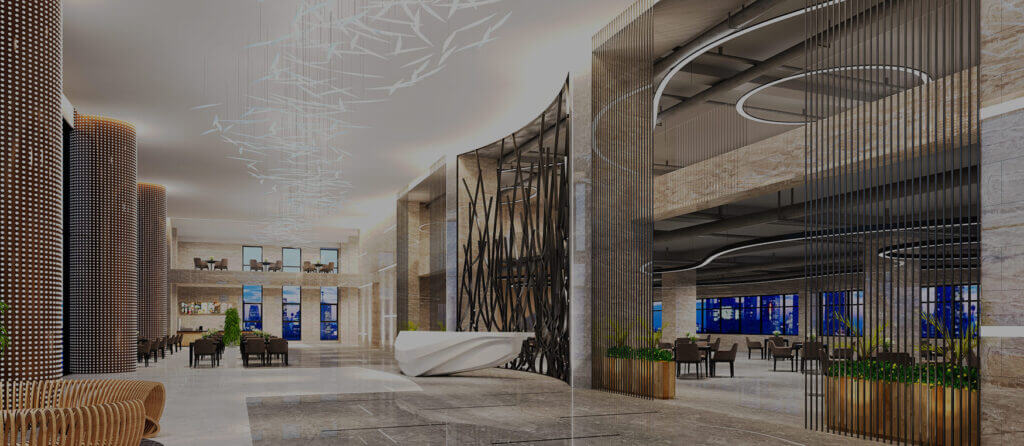Architectural lighting trends are the connection between design and technology that gives a space its unique appeal. Lighting is an intrinsic part of architectural design. It influences how a space is used and beheld.
Architectural lighting elicits emotional responses that designers will have anticipated at the earliest stages of their project. Bespoke lighting draws attention to the textures and colours of a room to make an aesthetic statement. But the function and efficiency of architectural lighting is equally important.
As such, the three main characteristics of architectural lighting are aesthetic, function, and efficiency. These influence all architectural lighting trends. Three of those trends for 2021, are:
• Task lighting
• Statement / feature lighting
• Contrast lighting
Task lighting
The job of task lighting is, as you would expect, lighting that facilitates a task or activity. Architects will consider what a room will be used for and where light sources need to be located.
Take three different rooms in a house: kitchen, bathroom, and lounge. Each room will have different bespoke lighting requirements due to the tasks performed there.
Kitchen task lighting might be ceiling downlights or spotlights, under cabinet lighting or dimming lighting. All have different functions to light specific areas and make it easier to prepare food, cook, dine, or socialise.
Bathroom task lighting could include ceiling spotlights and mirror lighting. Mirrors with lighting are becoming increasingly popular to deal with dark autumn and winter mornings when ceiling spotlights don’t provide sufficient light for using the mirror. Cabling for mirror lighting needs to be incorporated into the bathroom design.
Lounge task lighting is used for reading, sewing, games and other tasks that individuals might want to do that doesn’t involve all occupants of the room. These task lights can be floor lamps, wall lamps, table lamps or uplighters, all of which direct the light to a specific area whilst also offering an ambient warmth to the room.

Statement or feature lighting
Statement lighting is very much in the aesthetics camp of architectural lighting, but it still needs to be functional. Such luxury lighting might be an eye-catching chandelier, a set of stunning pendant lights, or any other lighting piece that visitors find themselves cooing over. Usually, the bolder the better.
Your statement lighting can define the style of your home, adding colour, texture, and glamour. Statement pieces can be contemporary or rustic, it depends on the style of the room.
Grand chandeliers are on trend for large, opulent rooms while open iron lights are popular in more countryfied spaces. Handcrafted bespoke lamps always tick the box.

Contrast lighting
Contrast lighting allows black and white, or dark and light colour schemes to work. These pallets are popular contemporary choices, both in the domestic setting and commercially. Without the carefully positioned lighting, they would appear too dark or uniform.
Many restaurants are designed with dark furniture and materials. The lighting provides a contrast that features certain elements of the room, perhaps the tables or the seating area or wall art.
Contrast lighting transforms shadowy rooms without resorting to intrusive levels of brightness. Track lighting systems, wall lights and pendants are all popular choices for providing contrast to dark décor.
If you would like to discuss architectural lighting trends or are looking for bespoke commercial lighting inspiration, please telephone us on 0208 683 0721 or email us



